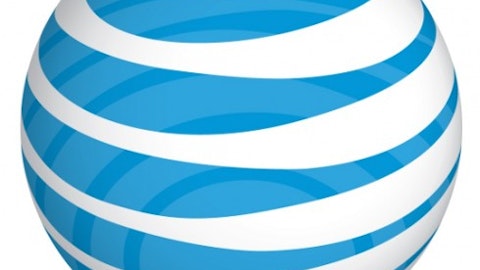McDonald’s Corporation (NYSE:MCD)
Americans like to eat, even when times are tough. McDonald’s enjoyed robust margin expansion during the financial crisis as hungry Americans opted for inexpensive alternatives to higher priced restaurants. McDonald’s Corporation (NYSE:MCD) enjoys an incredible operating margin of more than 30% on top of a valuation that puts it in line with the broad market.
The company’s international expansion plans somewhat insulate the company from American economic weakness. It should be mentioned that McDonald’s had an average 5-year revenue growth rate of 4.58% through 2011, arguably the most challenging 5 year period for any restaurant business.
McDonald’s Corporation (NYSE:MCD) trades at 15 times forward earnings projections, and pays a dividend that rewards investors with a yield nearing 3% per year, which may save some investors from the paltry yields in fixed-income thanks to the Fed’s aggressive bond buying.
The Coca-Cola Company (NYSE:KO)
Nothing says flight to quality like a move to Coca-Cola. This well-insulated beverage company has a wide economic moat from its incredible distribution network. New competitors stand little chance against one of the best known brands in the world with distribution in every country except North Korea.
The Coca-Cola Company (NYSE:KO) is the kind of value play that can survive hard times. While consumer staples companies often lose customers to trading down, far more people are willing to pay an extra 25 cents for Coca-Cola compared to a cheaper private-label soda product. Coca-Cola also enjoys a favorable geographic income distribution, generating more than half of its revenues and profits overseas.
With a dividend yield of 2.58% and a forward earnings multiple of 16.7 times forward earnings, this defensive stock is worth a look as another asset bubble-fueled spending spree begins.
Raising cash
When stock prices only go up – and that’s all they’ve been doing in 2013 – investors should consider carefully the idea of slashing exposure.
Stock investors shouldn’t forget fixed-income investments. While the yields are low across the board, yields don’t matter nearly as much as safety. A sub-1% yield on the 5-year Treasury may look unattractive, but compared to a 5% loss in stocks in a market selloff, a yield measured in basis points is still a better return than losing money. Vanguard Intmdte Tm Govt Bd ETF (NASDAQ:VGIT), which holds US Treasury securities with a maturity of 3-10 years yields .9% to maturity.
The Shiller cyclically-adjusted price-earnings ratio of 23.44 for the SPDR S&P 500 ETF Trust (NYSEMKT:SPY) is well above the historical median of 15.88 and average of 16.47 times earnings as measured by Multipl. Stocks are quickly surging to early 2000-levels as measured by the CAPE, the last time interest rates fueled a housing and consumption binge and American savers put little away in their retirement accounts.
Investors should start playing it safe. As large cap stocks trade for multiples far higher than historical norms and consumers tap out their ability to spend, a reversion to the mean could be devastating for investors who aren’t positioned for at least a modest correction in asset prices.
Jordan Wathen has no position in any stocks mentioned. The Motley Fool recommends Coca-Cola and McDonald’s. The Motley Fool owns shares of McDonald’s.
